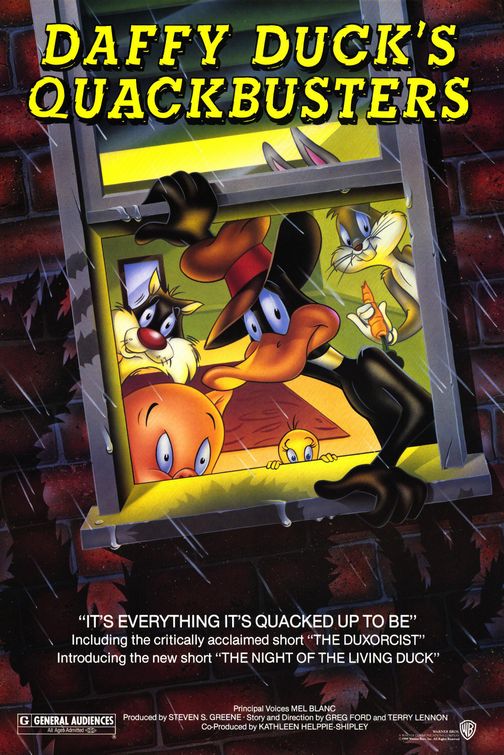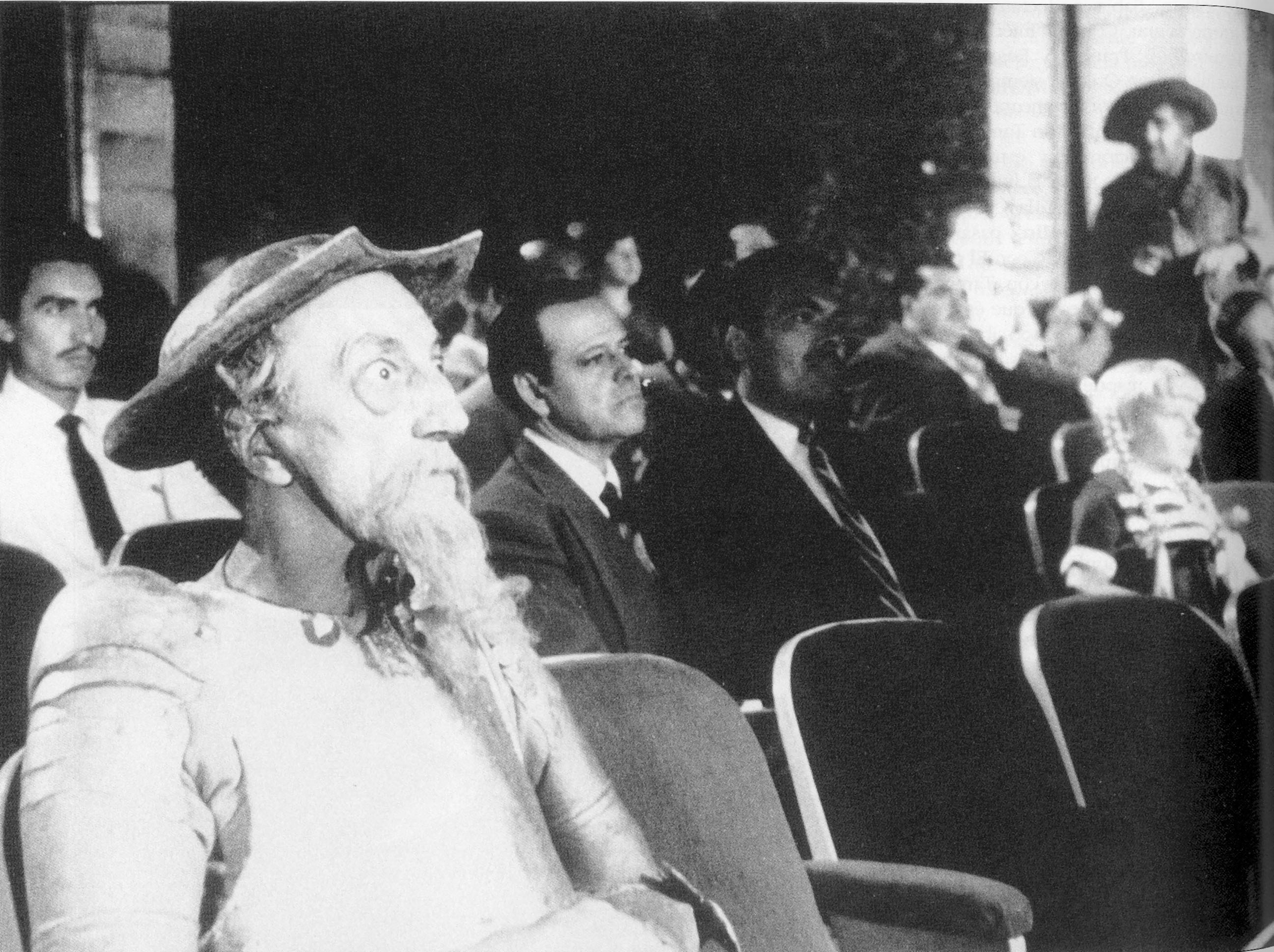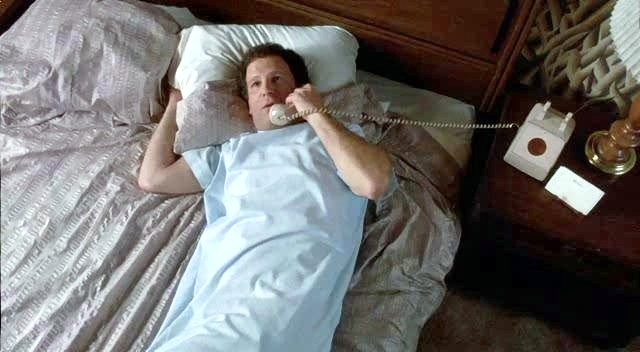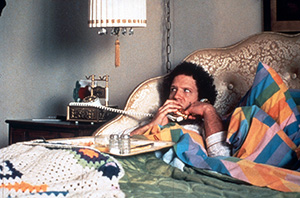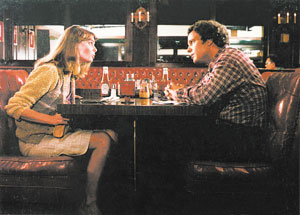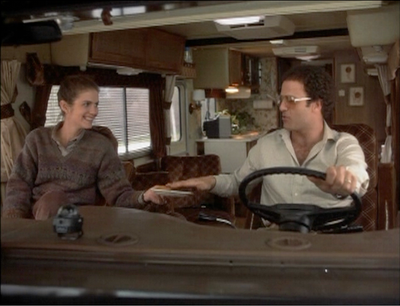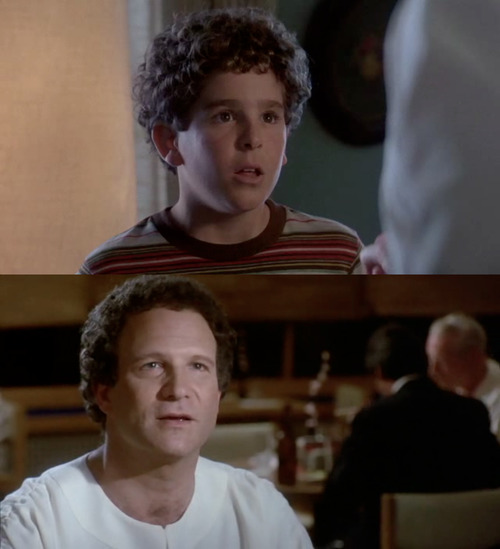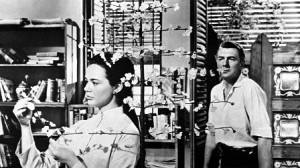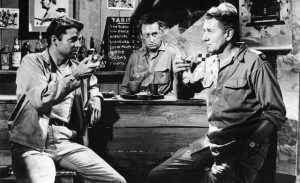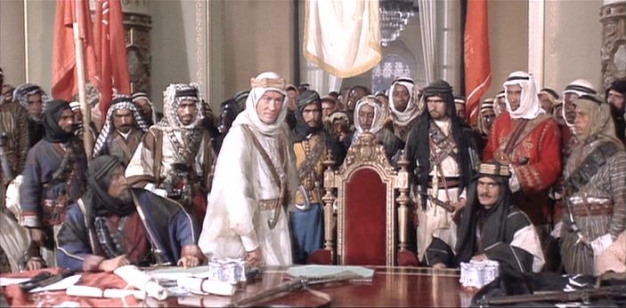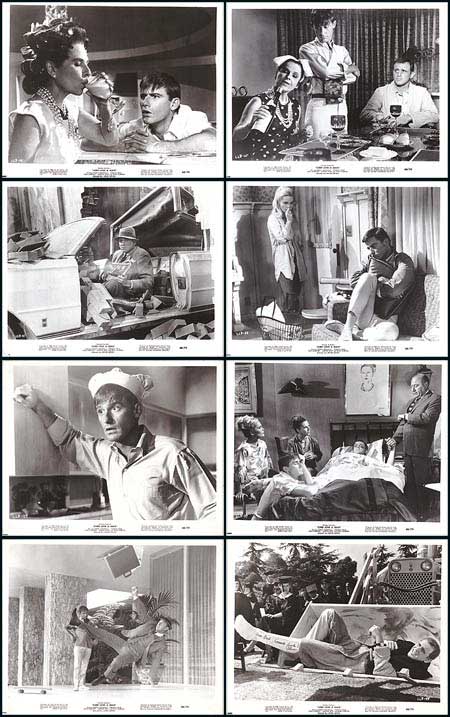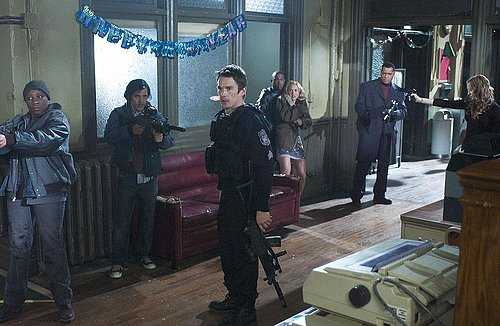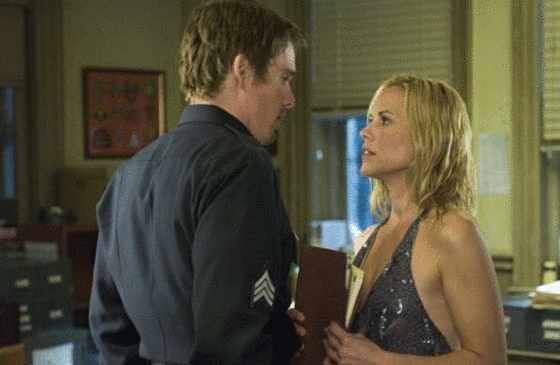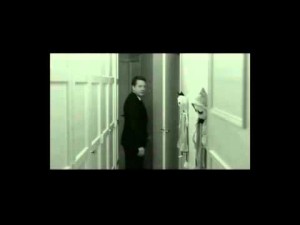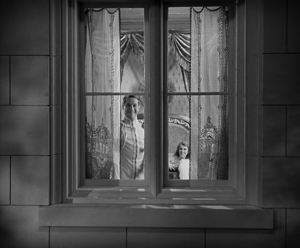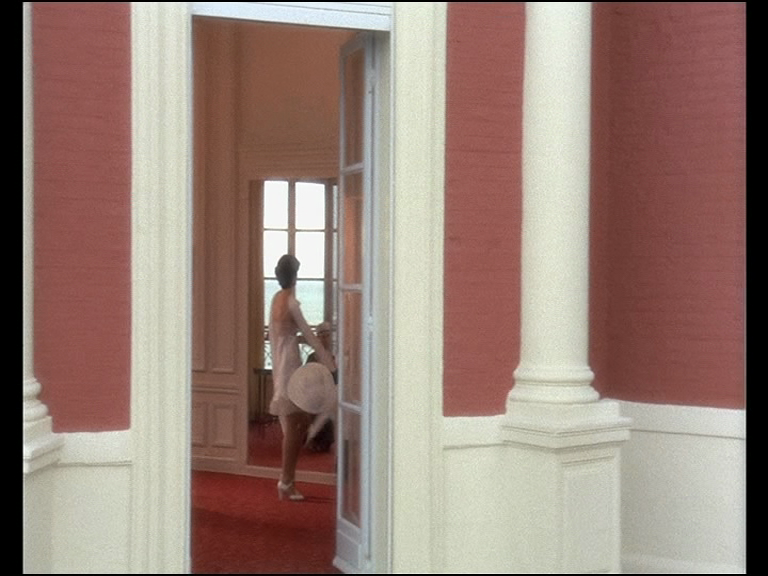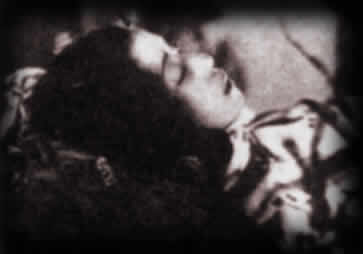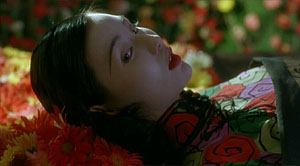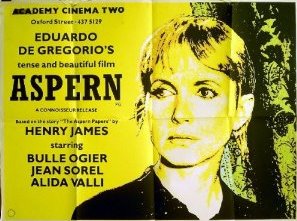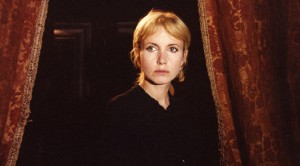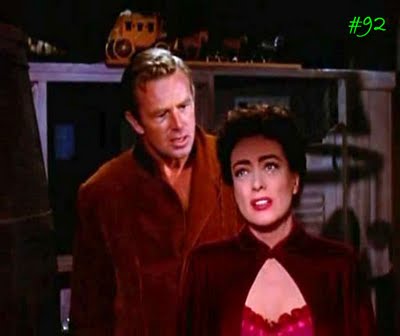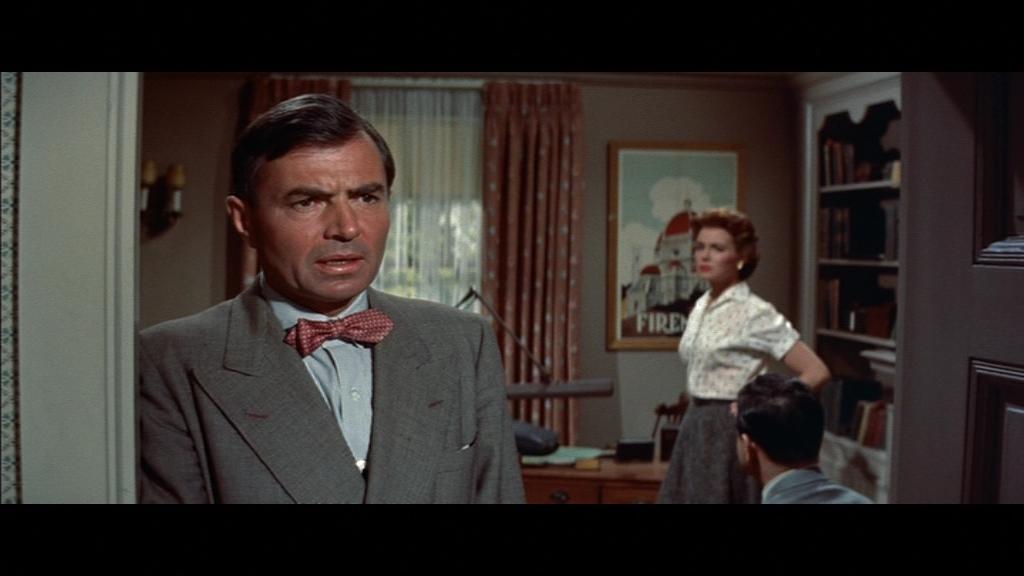Yearly Archives: 2024
The Tree, the Mayor and the Media Center
The Tree, the Mayor, and the Media Center
What a pity that one of Eric Rohmer’s best features should have fallen between the cracks and never received a U.S. release. But what a piece of luck that the Museum of Contemporary Art should launch its series “Living Spaces: Films on Architecture” with a swell pair of French features: Jean-Luc Godard’s multilingual Contempt (see separate listing), which features a famous villa designed by writer Curzio Malaparte, and Rohmer’s conservative comedy of manners (1993), receiving its Chicago premiere. A provincial mayor (Pascal Greggory) gets a government grant to build a media center, and the film’s gentle mockery of the socialist politician, some of it articulated by his own mistress (Arielle Dombasle), shows how Rohmer must have influenced Whit Stillman (Metropolitan, The Last Days of Disco). Yet Rohmer exceeds even Stillman’s audacity by turning this wry fable into a musical in its closing minutes; nothing he does here is predictable, yet in retrospect it all seems logical and balanced. With Fabrice Luchini; a 35-millimeter print in stereo will be shown. Museum of Contemporary Art, 220 E. Chicago, Sunday, January 16, 4:00, 312-397-4010 Read more
Nowhere Man [TIME OUT]
From the Chicago Reader (April 19, 2002). — J.R.
Time Out
**** (Masterpiece)
Directed by Laurent Cantet
Written by Robin Campillo and Cantet
With Aurelien Recoing, Karin Viard, Serge Livrozet, Jean-Pierre Mangeot, Monique Mangeot, Nicolas Kalsch, Marie Cantet, Felix Cantet, and Maxime Sassier.
My French-English dictionary defines l’emploi du temps — the term used as the French title of Laurent Cantet’s remarkable feature Time Out — as the “timetable (of work), allotment of time.” Neither translation makes for a catchy film title, so it’s easy to understand why “time out” was selected. It also seems a fairly apt description of the spooky shadow existence of the film’s bland yet mysterious and compelling hero, Vincent Renault (Aurelien Recoing). A financial consultant fired weeks or months previously, he’s afraid to tell his family and friends the news. After a former work associate starts to wonder why he hasn’t told his wife, Muriel (Karin Viard), he invents a new job with the United Nations that obliges him to spend time in Switzerland, then gets his father and some friends from high school to invest in his imaginary activities. All the while he remains on the margins, spending much of his time in a hotel lobby, sleeping in his car in the hotel’s parking lot, eating in convenience stores, and driving aimlessly around the countryside near Grenoble and the French-Swiss border. Read more
Quack to the Future
From the Chicago Reader (September 8, 1989). — J.R.
DAFFY DUCK’S QUACKBUSTERS
*** (A must-see)
Directed and written by Greg Ford and Terry Lennon
With Daffy Duck, Bugs Bunny, Porky Pig, Tweety Pie, Sylvester the Cat, J.P. Cubish, and the voice of Mel Blanc.
It seems more a matter of confusion at Warner Brothers than either poetic justice or business acumen that has denied this triumphant new cartoon feature a theatrical opening in Chicago, although it has recently become available here on video. After a limited if successful run in a New York theater last fall and several scattered theatrical play dates elsewhere in the U.S., Daffy Duck’s Quackbusters has entered the vast no-man’s-land of new features that are available for the most part only on tape, never having received the mainstream attention routinely accorded to other, mainly inferior, Hollywood releases.
Recycled Hollywood classics are very much in evidence right now, in a variety of forms, but this postmodernist conflation — consisting of nuggets from nine earlier Warner Brothers cartoons, two more-recent ones, and a generous amount of new material — displays a critical intelligence and a creative energy that were not apparent in such previous compilations as The Bugs Bunny/Road Runner Movie, The Looney, Looney, Looney Bugs Bunny Movie, Bugs Bunny’s 3rd Movie: 1001 Rabbit Tales, and Daffy Duck’s Movie: Fantastic Island. Read more
When Will — and How Can — We Finish Orson Welles’s DON QUIXOTE?
Commissioned (but never published) by the Guardian, circa 2005. A much-expanded version of this wound up as the final chapter in my book Discovering Orson Welles. — J.R.
When Will — and How Can — We Finish Orson Welles’s Don Quixote?
When Orson Welles died in 1985, he left many of his films unfinished. Each one was unfinished in a different way and for somewhat different reasons. To the despair of anyone who has ever tried to market his work, no two Welles films are ever alike, even the theoretical ones.
But his Don Quixote, which he owned himself, is distinct from the others, for a number of reasons —- apart from the fact that something calling itself the Don Quixote of Orson Welles was put together in 1992 by Spanish hack director Jesus Franco, who did more to mutilate and distort Welles’ material than anyone had ever done to The Magnificent Ambersons or Mr. Arkadin.
It remained an active project for almost the last three decades of Welles’ life. Starting around the early 70s, Welles jokingly planned to call it When Will You Finish Don Quixote? And the question we used to ask Welles we now have to ask ourselves — namely, how can we find closure? Read more
Movie Heaven [DEFENDING YOUR LIFE]
From the Chicago Reader (April 5, 1991), and reprinted in Goodbye Cinema, Hello Cinephilia. — J.R.
DEFENDING YOUR LIFE
**** (Masterpiece)
Directed and written by Albert Brooks
With Albert Brooks, Meryl Streep, Rip Torn, Lee Grant, and Buck Henry.
From the very titles of his four comedy features, we know that Albert Brooks is both a serious and an honest filmmaker, because each one is a precise and accurate indication of what the movie is about: Real Life, Modern Romance, Lost in America, and Defending Your Life. But what makes Brooks funny is much harder to get at or agree on.
You can’t demonstrate how funny Albert Brooks is by quoting any of his one-liners, the way you can the vastly more popular and respected Woody Allen. And you can’t say that Brooks is funnier than Allen if you’re measuring by the average number of laughs produced. (I find most of Modern Romance too painfully accurate to laugh at, although the comic conception remains flawless; and even though the laughs come more readily in Brooks’s other pictures, the degree of emotional pain being seriously dealt with is well beyond Allen’s range.) Nevertheless, I think Brooks is the best comic writer-director-actor we have in this country at the moment — certainly the most original and thoughtful, and the one who has the most to tell us about who we are. Read more
The Quiet American [1958] & The Quiet American [2002]
From the Chicago Reader (February 1, 2002). — J.R.
Joseph L. Mankiewicz’s 1958 adaptation of the Graham Greene novel certainly makes hash of its anti-American, procommunist elements, but this story about a disillusioned British journalist (Michael Redgrave) and an idealistic American (Audie Murphy) battling over the heart, mind, and body of a Saigon woman was sufficiently provocative for Jean-Luc Godard to declare it the best film of the year. The fact that Mankiewicz cast Italian actress Giorgia Moll as the woman suggests how remote he was from Vietnam, yet the scene in which the American asks the Brit to translate his marriage proposal into Vietnamese must have struck Godard: five years later he cast Moll as an interpreter in Contempt. Though The Quiet American may seem a curious cold war artifact today, it embodies Mankiewicz’s talky cinema in all its measured ambiguity. 120 min. (JR)
***
From the Chicago Reader (June 1, 2002). — J.R.
Phillip Noyce’s first-rate adaptation of Graham Greene’s interesting 1955 anti-American novel about Vietnam, scripted by Christopher Hampton and Robert Schenkkan, was held back by Miramax, its U.S. distributor, for over a year because of September 11 — apparently on the assumption that Americans who considered the terrorist attacks unprovoked would find any criticism of their country’s overseas behavior in the 50s unwarranted and unnecessary. Read more
Recommended Reading: THE CROSS OF REDEMPTION
THE CROSS OF REDEMPTION: UNCOLLECTED WRITINGS by James Baldwin, edited and with an introduction by Randall Kenan, New York: Pant6heon Books, 2010, 307 pp.
I’ve only barely started to familiarize myself with this collection, but it’s already become apparent that this is far cry from what’s commonly known as “scraping the bottom of the barrel”. Indeed, as with James Agee’s collected non-fiction, one is discovering that the Library of America’s efforts at canonizing cantankerous eloquence is, let us say, a bit under-researched, to say the least (unless the problems are simply those of taste). Baldwin’s review for the Village Voice of Seymour Krim’s first collection of essays, the first thing I read here, is plainly superior to some of the things that went into the Library of America’s selection (and, as I’ve argued elsewhere, what I regard as the strongest essay Agee ever wrote, “America, Look at Your Shame!”, even if it was never published during Agee’s lifetime, is criminally omitted from both of LOA’s two Agee volumes).
I’ve encountered some other treasures in The Cross of Redemption, even at this preliminary stage, but let me zero in here on a single prophetic statement contained in the first paragraph of a 1961 Baldwin lecture that Kenan quotes from in his Introduction:
Bobby Kennedy recently made me the soul-stirring promise that one day — thirty years, if I’m lucky — I can be President too. Read more
Blue-eyes Is Back [LAWRENCE OF ARABIA]
From the Chicago Reader (March 24, 1989). — J.R.
LAWRENCE OF ARABIA
**** (Masterpiece)
Directed by David Lean
Written by Robert Bolt
With Peter O’Toole, Alec Guinness, Anthony Quinn, Jack Hawkins, Jose Ferrer, Anthony Quayle, Claude Rains, Arthur Kennedy, and Omar Sharif.
Thanks to a meticulous restoration carried out by Robert A. Harris and Jim Painten, working with a team of specialists that ultimately included director David Lean himself, Lawrence of Arabia has been rereleased in all its original glory in a version that includes some footage that wasn’t even seen by most of the film’s earliest audiences (the original road-show version, released in late 1962, was cut by about 20 minutes before it went into general release). I won’t dwell upon the complex detective work carried out by the restorers, except to note that in order to make the version currently playing as complete as possible, the original actors even redubbed some of their lines, which were then electronically altered so that their present voices would sound like their voices 27 years ago. Lean was also permitted to make a few minor modifications in the editing, so that the definitive version of this epic about the enigmatic T.E. Lawrence and his unorthodox military career is actually a “final cut” that incorporates practically all of the material that was in the original version. Read more
Lord Love a Duck
From the Chicago Reader (August 23, 2002). — J.R.
George Axelrod’s 1966 black comedy about sexual hysteria and the American dream presents a view of southern California that rivals Nathanael West’s The Day of the Locust in its savagery and satirical insight. Tuesday Weld, in a career-defining performance, plays a luscious high schooler whose Mephistophelian classmate (Roddy McDowell) promises to get her everything she wants, and though the movie is sometimes too dark to be simply funny, a good bit of it is flat-out hilarious. Lola Albright is especially good as Weld’s mother, and the scene in which Weld and her father (Max Showalter) shop for sweaters may top Kubrick’s Lolita (as well as Nabokov’s) in its sheer audacity. Axelrod, directing his first feature, collaborated with Larry H. Johnson on the screenplay, adapting a novel by Al Hine; with Ruth Gordon, Martin West, and Harvey Korman. 102 min. (JR)
A Different Kind of Thrill (Richet’s ASSAULT ON PRECINCT 13)
From the Chicago Reader (January 21, 2005). — J.R.
Assault on Precinct 13
*** (A must-see)
Directed by Jean-Francois Richet
Written by James DeMonaco
With Ethan Hawke, Laurence Fishburne, John Leguizamo, Gabriel Byrne, Maria Bello, Brian Dennehy, Drea de Matteo, and Ja Rule
John Carpenter’s first solo feature, Assault on Precinct 13 (1976), is an effective low-budget genre piece — a perfectly proportioned, highly suspenseful action story about a few individuals under siege. It’s derived in part from Howard Hawks’s 1959 western Rio Bravo: Carpenter directly quotes from the dialogue and action, and he jokily adopts the pseudonym of John T. Chance, the name of John Wayne’s character, as the credited editor. The film is also influenced by claustrophobic horror movies such as The Thing (which Carpenter subsequently remade), The Birds, and Night of the Living Dead, especially their depiction of how unstable group dynamics are affected by an impersonal menace.
After most of the employees of a police station in a Los Angeles ghetto have moved to a new building, the station is attacked by a vengeful gang that uncannily expands into a mob, to the accompaniment of Carpenter’s relentlessly minimalist, percussive synthesizer score. A black rookie named Bishop and two white secretaries are the only remaining staff, and once Bishop realizes they can’t survive without help, he frees two prisoners, one black, one white — both hardened criminals en route to the state pen. Read more
En movimiento: Critical Taste versus Criticism
My column for the June 2015 issue of Caimán Cuadernos de Cine. — J.R.
Although we often collapse the two into a single entity, it’s important to acknowledge that criticism and critical taste are far from identical or interchangeable. It’s instructive that Godard today considers Truffaut more important as a critic than as a filmmaker, and equally provocative to learn from both Dudley Andrew’s biography of André Bazin and the fascinating, lengthy interview with Resnais in Suzanne Liandrat-Guigues and Jean-Louis Leutrat’s 2006 book Alain Resnais: Liaisons secrètes, accords vagabonds (Cahiers du Cinéma) that Resnais originally functioned as Bazin’s mentor on film history during the German Occupation, especially on the subject of silent cinema, when he used to carry his 9.5 mm projector on his bicycle in order to show silent movies at La Maison des Lettres on rue des Ursulines, and Bazin, still fresh from the provinces, hadn’t yet encountered silent films in general or the early films of Fritz Lang in particular.
Unlike Bazin and Truffaut, Resnais was of course never a critic. Yet his critical taste was clearly every bit as central to his own films as Truffaut’s or Godard’s critical tastes and positions were to their own oeuvres. Read more
Entries in 1001 MOVIES YOU MUST SEE BEFORE YOU DIE (the first dozen)
These are expanded Chicago Reader capsules written for a 2003 collection edited by Steven Jay Schneider. I contributed 72 of these in all; here are the first dozen, in alphabetical order. — J.R.
Actress
Stanley Kwan’s 1991 masterpiece (also known as Ruan Ling-yu and Center Stage) is still possibly the greatest Hong Kong film I’ve seen; perhaps only some of the masterpieces of Wong Kar-wai, such as Days of Being Wild and In the Mood for Love (both of these also significantly period films) are comparable in depth and intensity. The story of silent film actress Ruan Ling-yu (1910-’35), known as the Garbo of Chinese cinema, it combines documentary with period re-creation, biopic glamour with profound curiosity, and ravishing historical clips with color simulations of the same sequences being shot — all to explore a past that seems more complex, sexy, and mysterious than the present. Maggie Cheung won a well-deserved best actress prize at Berlin for her classy performance in the title role, despite the fact that her difference from Ryan Ling-yu as an actress is probably more important than any similarities. In fact, she was basically known as a comic actress in relatively lightweight Hong Kong entertainments prior to this film, and Actress proved to be a turning point in her career towards more dramatic and often meatier parts. Read more
ASPERN (1984)
This was written in May 2014 for an Italian volume about fantastique cinema between 1980 and 2010 coedited by Antonio Gragnaniello. — J.R.
Speaking to Tom Milne and Richard Combs in Monthly Film Bulletin, the director of Aspern, Eduardo de Gregorio (1942-2012), avowed that “it was never meant to be a fantastique film”— which isn’t surprising given that its source, Henry James’ novella The Aspern Papers, has no relation to that genre either. But it was regarded by several French critics as having some relation to fantastique, apparently for two reasons: because fantastique as opposed to fantasy is often regarded as a matter of style and/or atmosphere rather than content, and because the better known works of de Gregorio — such as his scripts for Jacques Rivette’s Céline et Julie vont en bateau, Duelle, and Noroît and his own Sérail and Tangos volés—clearly belong to fantastique, while his work as a whole has clear links to both the 19th century Gothic tradition and the so-called “magical realism” of 20th century Latin American literature.
Even though much of Henry James’ dialogue is carried over into Aspern (translated into French), its basic plot — an obsessive literary scholar (the narrator in James’ tale) insinuates himself into the Venice household of an aged woman cared for by her lonely spinster niece with the aim of procuring her love letters from Aspern, a long-deceased romantic poet she was once involved with — undergoes several decisive changes in de Gregorio’s version, scripted by his partner at the time, Michael Graham. Read more
Nick’s Kicks
From The Soho News (November 24, 1981). — J.R.
Nick’s Movies (Nicholas Ray retrospective)
The Public Theater through December 13
Fantasy and counter-fantasy are perpetually at war in the films of Nicholas Ray — accounting in no small measure for the highly charged heat, light, fury, beauty, and pain that most of them project. In its most brilliant representations — the separate divisions of Vienna’s saloon in Johnny Guitar (1954), an almost surrealist Western; the house and mind of Ed Avery in Bigger Than Life (1956), an almost expressionist domestic melodrama — this graphic warfare actually becomes expressed in terms of discrete zones of action and confinement. “Down there I sell whisky and cards,” announces the imperious Vienna (Joan Crawford) on a stairway, gun in hand, to an itchy search party below that’s somewhere between a lynch mob and a sheriff’s posse. “All you can get up these stairs is a bullet in the head.”
Or consider another scene, one of the most memorable jaded love duets in movies, again spelled out through architecture and spatial balances as well as words and faces. Johnny Guitar (Sterling Hayden) sits at a kitchen table, drink in hand, while Vienna stands behind him, on the other side of a serving window, also facing us. Read more





